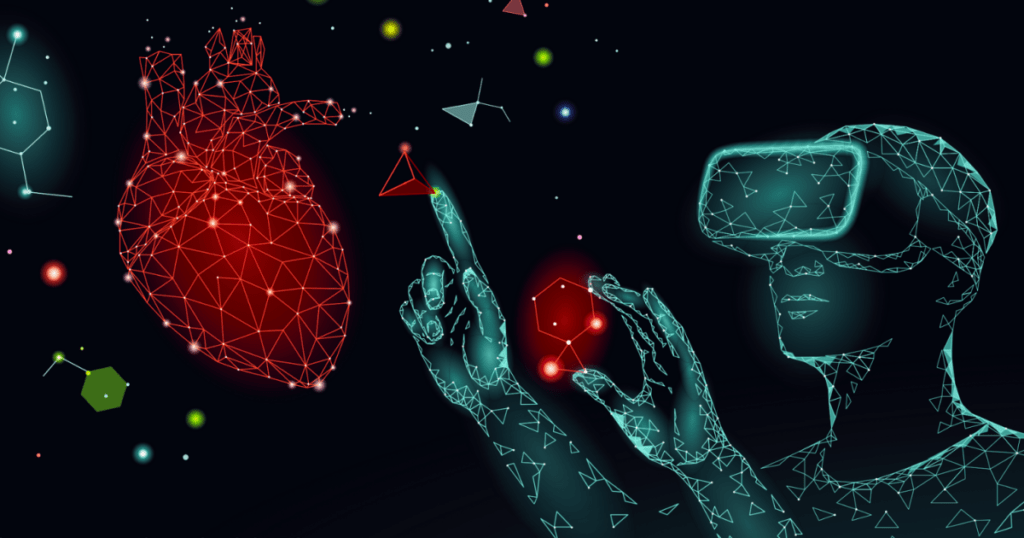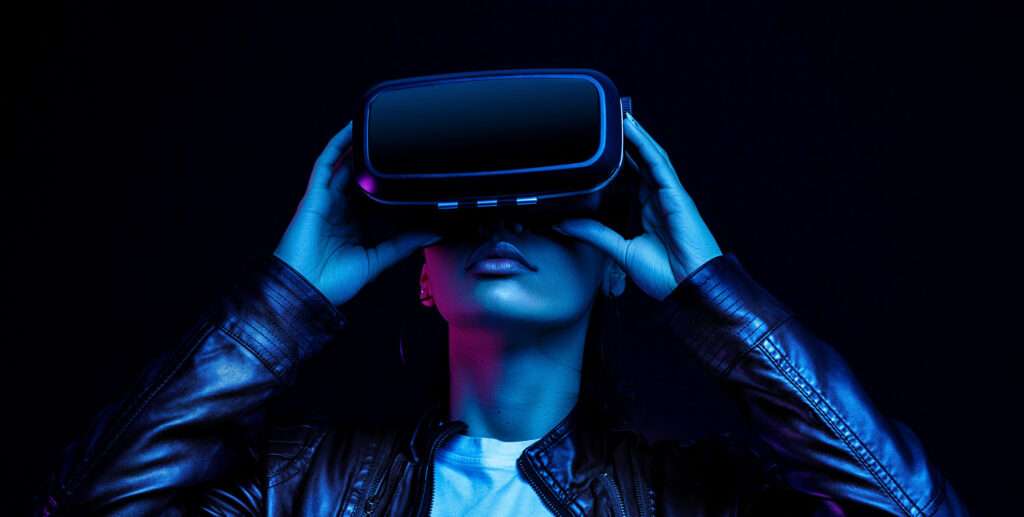Virtual Reality: A Glimpse into the Future
At its core, Virtual Reality (VR) beautifully marries the intricacies of artistic expression, cutting-edge technology, and the nuances of human sensory perception. This confluence has birthed a medium with transformative potential, empowering users to not merely observe but to actively engage with meticulously crafted three-dimensional realms sculpted by computational prowess. As the relentless march of technology progresses, we are witnessing an enriched evolution of these virtual landscapes. They are not only becoming increasingly lifelike in their rendering but are also embracing a level of personalization that tailors each experience to the individual, ushering in a new dimension of digital interaction that is as profound as it is immersive.
Stanford researchers, as mentioned in Stanford News, are at the forefront of these advances. They have been channeling the power of artificial intelligence to create better virtual reality experiences. Their primary focus? To develop new techniques that can significantly enhance 3D displays for both virtual and augmented reality technologies[^2^]. This highlights a new era in which AI does not just play a passive role but actively shapes and enriches the VR experience.

AI and its Evolving Role
When considering the trajectory of artificial intelligence, its evolution promises to be profound and multifaceted. Beyond mere algorithmic advancements or decision-making enhancements, AI is on a path to achieve a deeper resonance with the human experience. Its capacity to comprehend, interpret, and even mirror human emotions is growing, signaling a shift towards more intuitive machine-human interfaces. Notably, Forbes underscores this transformative phase of AI, highlighting the imminent era where it will facilitate exceptionally personalized experiences. Such advancements aren’t just theoretical musings; they hold tangible implications, especially in the realm of Virtual Reality. Envision a future where AI-powered avatars don’t merely function as digital entities but evolve into empathetic beings in virtual landscapes. These avatars could seamlessly interact with human users, perceive their emotions, and adapt in real-time, crafting a symbiotic nexus between man and machine.
The Dawn of the Metaverse
The “Metaverse” – often described as a collective virtual shared space created by the convergence of virtually enhanced physical reality and persistent virtual space – stands as the next big frontier. Companies like Meta (previously known as Facebook) are heavily invested in constructing the metaverse, envisioning it as an expansive digital universe consisting of interconnected VR environments.
Meta’s “Horizon Workrooms” is a current example of the steps being taken towards a metaverse. It is a VR space designed for remote work, allowing users to meet and collaborate in a virtual office environment. With realistic avatars, spatial audio, and tools that mimic real-life interactions, it represents the future of remote work and social interaction.

Metaverse: The Next Reality?
The concept of the metaverse is a monumental leap forward from being just a platform for entertainment. In today’s digitally-dominated era, where online interactions have seamlessly integrated into our daily lives, the potential of the metaverse is vast and transformative across numerous industries. Consider the realm of education: virtual classrooms within the metaverse could bridge geographical divides, allowing students from disparate corners of the world to engage and collaborate as if seated side-by-side in the same physical space. This not only fosters global learning but also promotes cultural exchange in real-time. Similarly, in the healthcare sector, the metaverse could usher in a new age of telemedicine. Imagine a scenario where a patient, regardless of their location, could virtually step into a healthcare facility, consult with top specialists from across the globe, undergo virtual diagnostics, and receive instantaneous medical advice and care. Such advancements could dramatically change the accessibility and quality of services, democratizing access to the best resources irrespective of geographical constraints.

Challenges Ahead
While the potential of the metaverse and virtual reality is undeniably promising, it’s crucial to also confront the myriad challenges on the horizon. At the forefront of these concerns are ethical dilemmas, notably issues surrounding data privacy. As users immerse themselves in these virtual realms, questions about who owns, accesses, and controls their digital footprint become paramount. Alongside this is the imperative need for consent mechanisms in these spaces, ensuring users’ autonomy and rights are not infringed upon. Furthermore, the potential for technology misuse—whether through misinformation, manipulation, or other malevolent means—cannot be overlooked. Beyond these ethical and technological concerns is the emerging apprehension regarding VR addiction. As the line between virtual and physical realities becomes increasingly blurred, especially with hyper-realistic VR environments, there’s a looming risk. Users might find the allure of the virtual world so captivating that they distance themselves from their tangible surroundings. This could pave the way for not only addiction but also a cascade of mental health challenges, underscoring the importance of striking a balance between innovation and well-being.

Conclusion
The convergent paths of Virtual Reality (VR) and Artificial Intelligence (AI) herald a new era teeming with both potential and pitfalls. As we stand on the precipice of a transformative epoch where virtual environments may soon rival, if not eclipse, the significance of our tangible world, a measured approach becomes imperative. While technology’s strides are nothing short of remarkable, it’s crucial that its evolution serves to augment the human experience rather than diminish or supplant it.
We find ourselves amidst a thrilling paradigm shift, and as the delineations between the tangible and the digital increasingly fade, a singular truth emerges: The unfolding realms of the metaverse and the advancements in VR extend beyond mere technological marvels. Instead, they signify a profound progression in the tapestry of human connection, experience, and evolution.
[^1^]: The Future Of Virtual Reality (VR) – Forbes
[^2^]: Using AI to create better virtual reality experiences | Stanford News










































